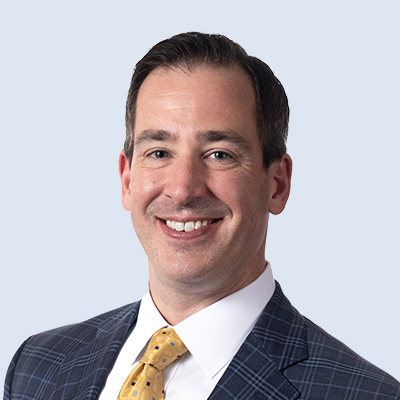Matt Greenstein: Hi, Matt and Andrew from the Alexander Group. Thanks, so much for taking a few minutes to hear our recap of our recent think tank with our private equity community in London. And thanks to all who attended. It was great to get everybody around the table and share thoughts and insights on the different go-to-market value creation Levers people are focusing on, also a little bit about how the role of the operating executive is maybe evolving or changing a bit. And so during the session there were five key topics that the group really dug into and some teams in insights that we took away. We focused on AI, it’s you know still hot, still buzzy. We talked about leadership and talent still the number one area of focus for value creation that you know our clients and our community focuses on. We talked a little bit about the role of the operating executive, how that’s changing we talked about pricing. We talked about exit prep and so Andrew and I thought we might share some of our takeaways from the event and broadly as we’re engaging with our private equity community.
Matt Greenstein: On the topic of AI there’s kind of two different things that we’re seeing and hearing in the communities talking about. One are use cases within the portfolio, but then also use cases within the firm itself.
Andrew Horvath: Yeah, Matt I think the use case peace around the portfolio companies. It’s how do we demonstrate proven ROI? How do we make our people more productive? That was really the bent of it and not so much as trying to reduce the human headcount or population there really more of a productivity enhancer but one of the more interesting parts of the discussion was one of our operating partner clients was talking about how their firm has an AI tool that they use to aggregate portfolio company data to be able to sort of see the data across the entire portfolio, tell the story and the growth story across different companies and really have a tool that can dig into a large volume of documents to be able to produce insights that ordinarily would be siloed within the portfolio companies and even within certain functions in those portfolio companies. So really to be able to provide an all-encompassing view of how the portfolio is performing.
Matt Greenstein: Yeah. The group joked to a little bit about the tool or AI making the operating executive a little bit obsolete. Instead of getting phone calls and asking to engage and answer questions, you know being able to go into a generative AI tool and get those questions answered. But, it was really neat to see the investment and the time that people were focusing on building something like that, the commitment. So the AI topic remains hot and definitely an area of focus. On the portfolio front, I think something that stood out to me was the need for portfolio companies to just do something, it’s kind of board level mandates. Find the use cases, find the applications. There’s not really tolerance or an excuse to wait and see. Get playing in the sandbox is a big message coming through from the community.
Andrew Horvath: Yeah, it’s right. I think a lot of the push was to take the tools or the suites they have right now and use the embedded AI tools within those before going off to buy a whole bunch of new platforms or software applications. So really using what I have now and using that as a test case.
Matt Greenstein: Yeah, another topic that’s still hot. It remains hot, it’s never stopped being hot is talent. I think the community spend time a little bit different on the topic than we’ve had in the past. Here it was just the importance of getting a sense early on of what you’ve got from an executive leadership standpoint so whether it be as part of a diligence workstream or in the first hundred days, being pretty clear cut with this is the leadership team that’s going to help me execute the value creation plan or not and move very quickly. It was refreshing to see how much unity there was on that point.
Andrew Horvath: Yeah, I think it’s also a function of the deal flow not having been totally unleashed lately. When there’s fewer deals in there the management team of incoming portfolio companies tends to get more attention from the deal and operating teams and you know the profile of what really works in these growth organizations, taking a very successful team to the next level. Operating partners are pretty good at identifying who’s going to make it and who won’t. So making the right decisions early in the hold and putting some new leaders in there to get the growth jump started is super important right now.
Matt Greenstein: Yeah, during the session we asked the group where are they spending their time? What’s consuming their energy right now? A lot of portfolio work, in particular exit prep. I think the interesting insight, not just you know helping close out value creation initiatives and prepare the story, but the time and effort that they were spending on preparing the management team to tell the story. There was a lot of consensus amongst the community about the need to make sure that management is prepared with a story to tell. But then also that they can be credible and confident when they’re meeting with the market to tell their story.
Andrew Horvath: Yeah, I think part of it is, let’s take the kudos, and broadcast success from the last investments in our go-to-market model. But also let’s talk about what the next iteration of the model looks like in advance of the next buyer. I think with hold periods continuing to be longer than usual, you have the ability to really reap the benefits from any sort of commercial transformation while the current leadership and current owner is in place, but get that next version on paper at least to make sure that we know where we’re going so when the next owner takes over, the story makes sense and the foundation is already built for that version 2.0
Matt Greenstein: Yeah. While AI is still probably the busiest given current events, tariffs became a bit of a topic and it lead us to a discussion about pricing, and what folks are doing in response to tariffs. I think you know while we moved quickly past that point. And yes, there are actions that folks are taking the conversation quickly moved to focusing on just pricing as one of those good hygiene things. It always has to be part of the value creation plan. It’s something that might be done beginning, middle and end of hold. It shouldn’t be kind of a one-time thing that folks are doing. A lot of commitment. It’s still second to talent or you know third, maybe behind others, but right square in the middle of where folks are spending time and where value creation efforts and energy are being focused.
Andrew Horvath: Well, I think too it highlighted the need for a really well developed revenue ops team. You think about some of these minute to minute or at least day to day fluctuations on pricing, the tariff impact. Having a good rev ops seem to be able to take those inputs from your procurement and plug that into the sales model, plug into forecasting, your pricing team, without that your operating blind around a lot of these corners. But a well-built team should be able to connect those functions, those teams to be able to have as up to the minute an approach is possible.
Matt Greenstein: Yeah, it’s a good point. I think the discussion and the community separated the strategic pricing piece from more of the operational peace and times like today the operational peace that you just described is even more important than, how are we going to take price or change short term strategy. The last topic that we focused on was a role of the operating executive. We talked a little bit about maybe how AI is changing that and maybe replacing some of the points of value from the operating executive that led us down a discussion of how operating executives create value and the background and the profile that firms are looking to bring in. And it was interesting the group shared that you know less consultants less problem solvers more people with dirt under their fingernails, people that have been there and done that and can be credible in front of CEOs that they’ve executed and delivered this type of impact and they know what they’re talking about very practically. Looking for people with those types of backgrounds, again prior operators, was a talent profile that folks are investing in in that operating role.
Andrew Horvath: Yeah, I think you know, especially when you think about the focus that a lot of these portfolio companies are getting just because of the lack of deal flow because of valuations. It’s one of those times were private equity firms are less likely to take a risk on someone that hasn’t actually walked the walk before so they’re looking for not only portfolio company leadership that has done the exact same type of work and the exact same type of company before. When you come to the operating partners, let’s talk about practitioners that we can just pull from industry to plug in and they know exactly what’s going on with the arc of that organization. Less likely to your point about bringing folks that are smart, but maybe don’t have the exact same operating experience. We don’t take offense of course.
Matt Greenstein: Pulling it all together, the community is focused on AI, evaluating leadership and talent, spending a lot of time in exit prep. Sourcing a different type of operating executive, pricing continues to be hot. Those tend to be the trends in the areas that the community is being focused on. And thanks for those who joined us in person. Thanks to you all for spending a few minutes to hear a little bit about the recap. Join us for our next think tank. To learn more about that visit us at AlexanderGroup.com.







